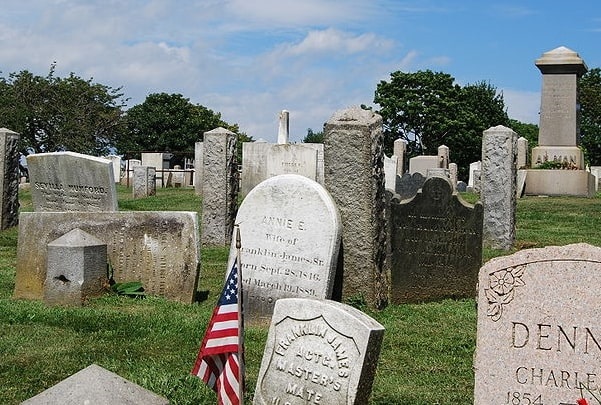Introduction: In this article, Jessica Edwards gives tips for finding and using obituaries in your genealogy research. Jessica has had a lifelong interest in her family’s history – especially on her father’s side, which goes back to the first settlers in Pennsylvania, Jamestown and New England – and has documented and added more than 21,000 people to her family tree!
In my many searches for obituaries for my family tree I have learned this lesson: be sure to look for multiple obituaries, as they may be published in several areas because of family members living in other places. Also, obituaries are often published in the deceased’s hometown as well as where they were living when they died.
The reason for trying to find multiple obituaries is that each area may print different information. Sometimes, after finding an ancestor’s obituary, a genealogist may think “Great, I found the obituary – now I’ll look for other records such as birth records, marriage announcements, etc.”
But don’t stop at the first obituary – try to find others, and use variations on your ancestor’s name to do so: searching just on the surname; try different spellings for the surname; use only an initial for the first name with the surname, etc.
In my searching recently in GenealogyBank’s Obituaries Collection for a distant member of my tree, I looked for the obituary for Daniel James Mullin, and I found two. Here’s what I found (be sure to compare the information in both).
The first is from the Progress newspaper.
The second is from the Star Tribune newspaper.
The first obituary, published 11 days after his death in a Texas newspaper (he died in Texas), had a wealth of family information, including the married names for the daughters and grandchildren. Also, it gave me the information on which of his brothers were deceased (I hadn’t looked yet for their information) as well as his parents, the names of his three living siblings (two brothers and a sister), and more about Daniel as a person. It also gave me information on approximately when he had married his wife (which allowed me to look for the marriage documentation).
This obituary said he was originally from Minnesota, and concluded with this line: “Interment will be held at St. Walburga Catholic Church and Cemetery in Fletcher, Minnesota, at a later date.”
That’s where the second obituary comes in handy. Although it doesn’t have as much family information as the first obituary, it was published on May 19 (3½ months after he died) in a Minnesota newspaper, for one important reason: it waited until the final funeral arrangements had been made, in Minnesota. Now I know that the “Funeral mass will be celebrated Saturday, June 1, 2019, at St. Walburga Catholic Church in Fletcher, MN, at 11am, with visitation one hour prior to mass.” It also confirmed that “Interment will follow at St. Walburga Cemetery.” These are important clues for finding out more information about the funeral and gravesite.
So, in closing, always look to see if there are multiple obituaries, as they might give you more information for your family tree. Use variations of your ancestor’s name to find those other obituaries. Don’t forget to be sure to document each source as well!
Happy Hunting!
Related Article:
